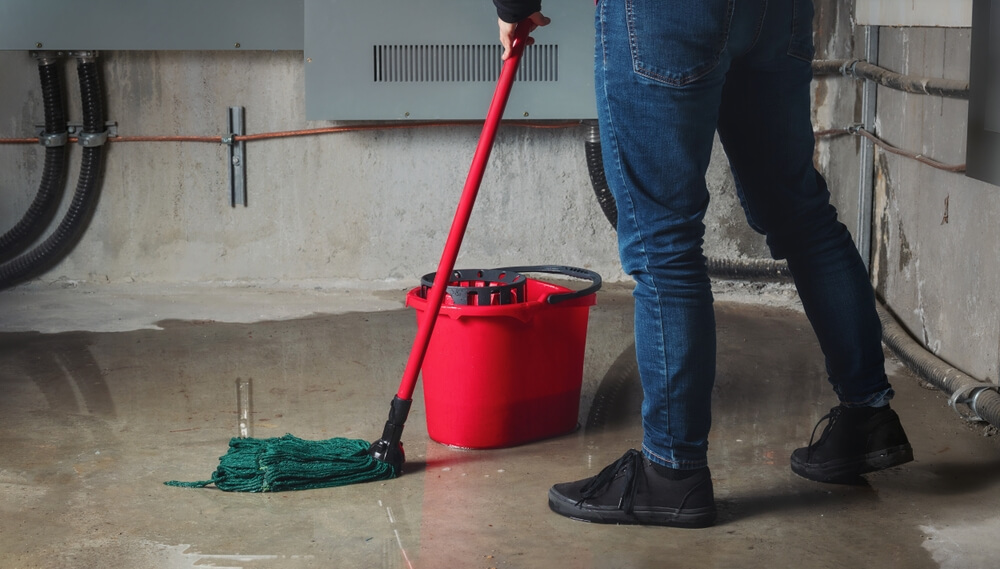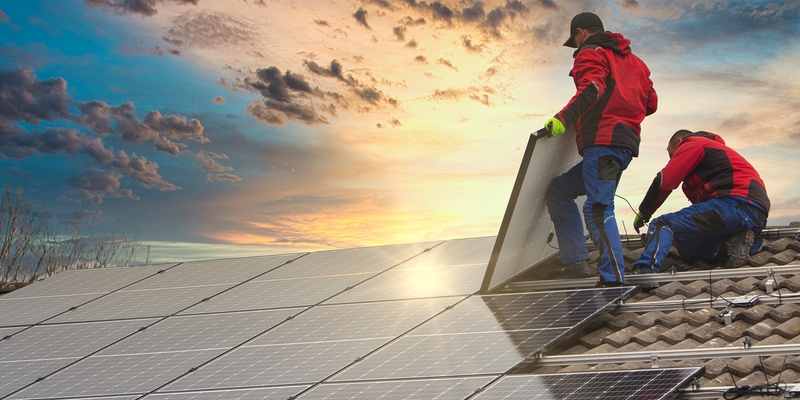The Best Home Insurance in Toronto
Compare and save an average of $360* on Toronto home insurance. Get a better rate.
Compare Toronto home insurance quotes from providers you trust
All about home insurance in Toronto
- Home insurance in Toronto
- Types of home insurance in Toronto
- Add-ons to home insurance coverage in Toronto
- What is not covered under your Toronto home insurance
- How much insurance coverage do I need for my home in Toronto?
- How to get your Toronto home insurance quotes on RATESDOTCA
- What people say about our quotes
- Factors that affect your Toronto home insurance
- How does home insurance in Toronto compare to the Greater Toronto Area?
- How much does Toronto average home insurance cost?
- How to get the cheapest home insurance in Toronto
- What risks do homeowners face in Toronto?
- Frequently asked questions about home insurance in Toronto
Home insurance in Toronto
Acquiring a home in Toronto can be an expensive proposition if you are looking for big city living with all the amenities that go with it. Of course, protecting your home and your possessions, likely your most expensive asset, is also part of that equation. That is why you’ll want to purchase home insurance for your property.
Home insurance in Ontario, and therefore Toronto, is not officially mandatory, but most lenders won’t provide a mortgage unless you take out home insurance coverage first.
Below are the types of home insurance you can get in Toronto including the most common and additional coverages.
Types of home insurance in Toronto
These are the most common types of home insurance coverage in Toronto.
Homeowners can choose from one of three insurance package types. Insurance providers may market each differently, but they’re generally described as outlined here:
- Basic – Protects the home against perils named in the policy such as fire and wind. This package offers the least amount of coverage available and as a result tends to be the least expensive. It is sometimes called a ‘named perils’ policy.
- Broad – Protects the home against all perils as well as protection for some contents. May sometimes be called a ‘standard’ policy.
- Comprehensive – The greatest amount of coverage available, protecting the home against all perils to the home and its contents. It is often referred to as an ‘all perils’ policy.
Home insurance coverage
- Property and building – This coverage protects both the structure(s) on your property, as well as the property itself, from a variety of perils. Protected incidents include fire, theft and water damage, among others. Because some policies may require additional coverage for secondary structures, like a garage or guest house, consult your insurer if anything is unclear.
- Contents and personal property – Contents and personal property coverage protects your possessions, such as furniture, clothing and sports equipment, against theft and vandalism. Some items, like fine art and expensive jewelry, may not be protected under a standard policy. Excluded items can be protected with additional coverage.
- Additional living expenses – If you’re temporarily displaced by an insurable event, this protection covers your temporary housing costs. For example, if damage to your home forces you to spend a week at a hotel, additional living expenses protection will cover the cost of the room and food, up to a certain amount.
Liability coverage
- Personal liability – This coverage provides protection against liability in the event of injuries, or property to any third party while they are on your property. The default on most home insurance plans for personal liability is $100,000 but it is recommended homeowners have coverage for as high as $1,000,000. Depending on your policy this can go as high as $5,000,000.
- Voluntary medical payments – If you unintentionally injure someone, or someone accidentally injures themselves on your property, this coverage will pay for the medical expenses for up to one year from the date of the accident. Insurers in Ontario offer coverage for Voluntary Medical Payments that typically range between $5,000 – $10,000, and there is no deductible.
- Voluntary property damage – This coverage is for unintentional direct loss or damage you cause to someone’s property. It also covers unintentional loss or damage to someone else’s property by a minor (12 years or under) in your care. Most insurance companies in Ontario set their limits for Voluntary Property Damage at $1,000; however, this will vary according to insurer and policy and often goes as high as $6,000.
Add-ons to home insurance coverage in Toronto
Beyond the standard components of Toronto home insurance policy, there are additional coverages you can purchase to further protect your home and the contents within.
These are some of the most common home insurance add-ons, also known as riders, that you can add to your home insurance policy:
- Overland water – Although not every carrier offers this add-on, if your insurer does, it covers property damage from overflowing water from nearby rivers, streams, lakes and thawing snow.
- Sewer back-up – Protects your home when a main sewer backs up and causes damage.
- Earthquake – Covers losses or damage caused by an earthquake. This add-on is especially useful if your home is in an area that is vulnerable to earthquakes.
- Mass evacuation – If an event, like a flood or wildfire, triggers a government issued evacuation order, this add-on pays for some of the expenses you incur while being away from your home.
- Identity theft – Covers the cost of replacing important documents, such as your passport.
- Lock replacement – If you need to replace the locks on your house, this add-on provides coverage.
What is not covered under your Toronto home insurance
While home insurance can certainly protect you from a variety of perils, it can’t protect you from everything. Some things you can purchase as add-ons, while others you can’t purchase at all. Here’s what they are:
- Flooding – Unless you get this as an add-on, you’re unlikely to be covered for flood damage, whether it's due to sewer back-up or overland flooding. Some types of water damage, such as the ones caused by a tsunami or groundwater seepage, may not have any coverage at all. It’s best to consult with your insurer.
- Earthquake or landslide – Neither earthquakes nor landslides are covered by regular insurance, comprehensive coverage included. You can, however, get this coverage as an add-on, so ask your insurer about it – especially if you live in an earthquake-prone area.
- Mold – Mold is usually preventable and doesn’t happen suddenly, meaning that you, as a homeowner, can make sure it doesn’t occur. For instance, if you realize that the air in your home is humid enough to cause mold, you can take the necessary steps to resolve the issue. That’s why home insurance does not cover mold. It’s on you to deal with it.
- Pest infestation – Though pest infestations, such as mice, bedbugs, cockroaches, and termites, can sometimes come out of nowhere, taking care of them is your responsibility, as part of general upkeep. So, any damage an infestation ends up causing is unlikely to be covered. Your best bet is to address the problem as soon as you notice it.
- Purposeful damage – If you purposely damage your own property or its contents and file a claim for it, you will not be covered. This is, in fact, considered to be insurance fraud, so don’t do it (though you are welcome to damage your own property).
- Intentional injuries to guests – If you intentionally hurt a guest in your own home, your liability coverage will not protect you. And no, there isn’t an add-on for this either. So, don’t purposely hurt your guests.
- Rental – If you decide to rent out your property (or a piece of it) to someone else, be sure to consult with your insurer, as you may need to purchase more coverage.
How much insurance coverage do I need for my home in Toronto?
The amount of home insurance coverage you need in Toronto is a personal choice that will depend on your circumstances and requirements. If you live in a higher-risk neighbourhood, with no security features, you may need more insurance than someone who lives in a less risky area and has a state-of-the-art security system.
Also, the size of your home, how much it costs to rebuild it and its contents will also determine how much home insurance in Toronto you will need. Talk to your broker or agent about how much coverage is right for your situation.
Recent home insurance quotes in Toronto

Recent home Insurance Quote from Toronto, ON
Semi-detached 1,742 sq ft
July 11, 2025
Cheapest Quote
$ 109 / month
$ 1,310 / yearAverage Quote
$ 212 / month
$ 2,539 / yearSavings
$ 102 / month
$ 1,224 / year
48 %
Recent home Insurance Quote from Toronto, ON
Semi-detached 1,250 sq ft
July 11, 2025
Cheapest Quote
$ 98 / month
$ 1,181 / yearAverage Quote
$ 241 / month
$ 2,888 / yearSavings
$ 142 / month
$ 1,704 / year
59 %
Recent home Insurance Quote from Toronto, ON
Semi-detached 1,722 sq ft
July 10, 2025
Cheapest Quote
$ 150 / month
$ 1,805 / yearAverage Quote
$ 342 / month
$ 4,109 / yearSavings
$ 192 / month
$ 2,304 / year
56 %
How to get your Toronto home insurance quotes on RATESDOTCA
Compare quotes and save!
Tell us about your home
Answer some basic questions about your home. It won't take long!
Compare your rates
See quotes from top insurance companies side by side.
Choose the right coverage
Find the right protection for your home and everything in it.
Secure your rate
Connect with the provider and secure your rate.
What people say about our quotes

Based on 6,448 reviews

Amazing
Very helpful and easy to use
Safe travels

Easy quick selection of rates
Easy quick selection of rates
J K

Great help in finding the best rate!
Great help in finding the best rate! Thanks a lot!
Ruthielyn opina

I like how I can quickly I can select…
I like how I can quickly I can select travel insurance. The web site had an issue earlier but seemed to correct itself.
Dennis

prompt service
Respnded quickly, recommended company was excellent
Michael W.

Save time and money with rates.ca
I always use rates.ca for my travel insurance. They compare rates from several insurance companies and I can choose the package that suits my needs. I save time, frustration, and best of all, money. Thank you rates.ca, I will definitely be using your service again in the future.
customer
Factors that affect your Toronto home insurance
There are several important factors insurers always consider when determining your specific premium. Here’s what they are:
- Replacement cost: How much, hypothetically speaking, would it cost to fully replace your home? Its square footage, construction quality, building materials and contents will all affect your premium. So, if your home is big, expensive to build and has lots of contents, it will cost more to insure.
- Location: The neighbourhood in which your home is located matters as well. It comes with its own history and unique circumstances, all of which will affect your premium. The most obvious cause for higher premium location-wise is crime. The more home robberies occur in the area, for example, the higher the premium.
- Your personal history: If you have a claims history, it too will play a role in determining your premium. The more claims you’ve filed in the past, the higher the likelihood of you filing claims in the future, which leads to higher premiums. The nature of your claims matters too, as more expensive claims can also raise your premium.
- Fire hydrant proximity: The closer you live to a fire hydrant and/or a fire station, the lower your premium will be. The faster your home can be saved from fire, the less damage it will receive, minimizing replacement costs. If you live in an urban area, this shouldn’t be a problem, since fire hydrants are everywhere. This is more of a concern for rural areas, where everything is far away.
- Piping: Older pipes – galvanized or made of lead – have a higher likelihood of leakage or cracking. Many homes in Toronto still have old pipes, which may result in your premium being higher. If you have the option, go for copper or plastic plumbing, as it’ll be less of a headache down the road.
- Electrical wiring: If your home has aluminum or knob-and-tube wiring, it’s at risk of fire damage. Before insuring you, your provider may either request a guarantee that your home doesn’t have this type of wiring, inspect it for safety or ask you to remove it. Other things that can raise your premiums include having fuses instead of breakers and having less than a 100-amp service. In both cases, your home is more likely to catch fire.
- Roof age: Make sure your roof has been renovated within the last 20 years to prevent roof-related damage and avoid higher premiums. Some insurers may cover only 25% of the replacement cost for roofs that are old enough to need repairs or replacement.
- Swimming pool: Swimming pools create a higher risk of a liability suit, due to a higher chance of injury to your guests. This can increase your premium.
- Wood stove: Wood stoves have a very high chance of causing a house fire, leading to higher premiums. Your insurer may also want to inspect it for safety. If you plan to install a wood stove, be sure to notify your provider.
- Alarms: Fire and/or security alarms will factor into your premium. If they also happen to be monitored by an outside service, your premium will be lower.
Average home insurance rates in the Greater Toronto Area (2025)
| Rank | City | Avg Insurance Premium | Difference from Toronto ($) | Difference from Toronto (%) |
|---|---|---|---|---|
1 | Woodbridge | $1,032 | - $491 | -32.24% |
2 | Ajax | $1,134 | - $389 | -25.54% |
3 | Markham | $1,215 | - $308 | -20.23% |
4 | Milton | $1,221 | - $302 | -19.83% |
5 | Whitby | $1,280 | - $243 | -15.96% |
6 | Vaughan | $1,336 | - $187 | -12.28% |
7 | Oakville | $1,343 | - $180 | -11.82% |
8 | Brampton | $1,352 | - $171 | -11.23% |
9 | Pickering | $1,361 | - $162 | -10.64% |
10 | North York | $1,364 | - $159 | -10.44% |
11 | Uxbridge | $1,370 | - $153 | -10.05% |
12 | Oshawa | $1,372 | - $151 | -9.91% |
13 | Richmond Hill | $1,375 | - $148 | -9.72% |
14 | Caledon | $1,376 | - $147 | -9.65% |
15 | Newmarket | $1,406 | - $117 | -7.68% |
16 | Whitchurch-Stouffville | $1,412 | - $111 | -7.29% |
17 | Halton Hills | $1,414 | - $109 | -7.16% |
18 | Burlington | $1,430 | - $93 | -6.11% |
19 | Mississauga | $1,470 | - $53 | -3.48% |
20 | East Gwillimbury | $1,482 | - $41 | -2.69% |
21 | King City | $1,504 | - $19 | -1.25% |
22 | Toronto | $1,523 | $0 | 0.00% |
23 | Port Perry | $1,567 | + $44 | +2.89% |
24 | Georgina | $1,643 | + $120 | +7.88% |
25 | Etobicoke | $1,675 | + $152 | +9.98% |
26 | Aurora | $1,710 | + $187 | +12.28% |
The average cost of home insurance in Ontario in 2025 is $1,565.
According to RATESDOTCA Insuramap data, Toronto has the most expensive home insurance in the Greater Toronto Area.
There are several possible reasons for the high cost:
- Toronto is home to a large number of older homes, which are typically more vulnerable to damage.
- Close proximity of fully and semi-detached houses, which can make exterior repairs difficult.
The figures shown above include homeowner’s insurance for houses – detached, semi-detached, townhouses and rowhouses – only. Condo insurance, which is typically less expensive than house insurance, has been excluded.
How much does Toronto average home insurance cost?
The average home insurance in Toronto, according to the Rates.ca Insuramap data, is $1,523 per year. This is roughly 2.95% above the provincial average of $1,568 per year. While not the most expensive in the province, the Toronto home insurance premium is mid- to high-end on the spectrum.
The rates all over the province reflect various factors, including location, crime rates, weather, age of the home and so on. In Toronto, many of the homes are older, which is why the city’s insurance rates are higher. Also, Toronto is densely populated, which can be a cause for further damage or need for insurance.
Average home insurance prices in Toronto by postal code
| Postal Code | Avg Home Insurance Premium |
|---|---|
N5V | $1,674 |
N5W | $1,668 |
N5X | $1,485 |
N5Y | $1,510 |
N5Z | $1,527 |
N6A | $1,942 |
N6B | $1,373 |
N6C | $1,708 |
N6E | $1,871 |
N6G | $1,469 |
N6H | $1,668 |
N6J | $1,621 |
N6K | $1,600 |
N6L | $1,989 |
N6M | $1,805 |
N6N | $1,588 |
N6P | $1,722 |
The average cost of home insurance in Toronto in 2025 is $1,523.

Save on Toronto insurance
Living in Toronto can be expensive. Whether you live in a detached house, townhouse or rowhouse, you can find home insurance to fit your budget.
Let RATESDOTCA do the work for you!
How to get the cheapest home insurance in Toronto
Getting the cheapest home insurance in Toronto is fast and simple. Here are some steps you can take to stretch your insurance dollars:
- Comparison shop – Sites like RATESDOTCA give you fast and easy access to the cheapest Toronto home insurance rates from the city’s top providers. Simply provide us with some information on the home you want to insure and a few other details, and in minutes you’ll have a list of cheap insurance rate quotes to compare.
- Bundling – Using multiple insurance products from one provider can also save you money. By bundling home, life and auto insurance, for example, you will qualify for discounts from your provider. They appreciate your loyalty and will pass on savings to you as a reward for your business.
- Installing a security system – Making your home safe, and less of a risk for damage or theft, can also save you money on your Toronto home insurance rates. Your home insurance provider assesses your rates based on risk. Reduced risk means fewer claims and therefore lower rates.
- Increasing your deductible – Deductibles are another risk factor your Toronto home insurance provider looks at when calculating your premiums. The higher your deductible, and the more you are willing to pay out-of-pocket, the less risk it is for your provider.
- Upgrades – Renovating your home and upgrading old plumbing or wiring will take out potential risks of flooding or fires, for example. Home insurance providers look at that reduced risk and provide cheaper rates as a reward for your efforts.
- Ask for discounts – Many Toronto home insurance providers will offer discounts to clients who are members of school alumni associations, unions or other organizations.
- Improve your credit score – Because credit can be seen as a risk factor, make sure to pay your bills on time and keep credit scores in good standing. The better your score, the lower your risk factor, and the lower your Toronto home insurance rates will be.
What risks do homeowners face in Toronto?
Windstorms: Though Toronto doesn’t get too many windstorms, there is precedent. In 2022, a derecho in Ontario and Quebec caused $1 billion in damages, affecting the Greater Toronto Area, Ottawa, Trois-Rivières, Quebec City and other areas in those provinces.
Freezing temperatures: Cold winters with temperatures reaching -30°C means the potential for burst and frozen pipes.
Flooding: Excessive melting snow following the winter months is something to look out for. While Toronto has a decent drainage system, spring time floods are not uncommon. These can be especially worrisome for dwellings with basements.
Frequently asked questions about Toronto home insurance
All your questions, answered.
Why is home insurance in Toronto so expensive?
Toronto house insurance is expensive for a variety of reasons.
The city has a lot of old homes, some over a hundred years old. These older houses can have inadequate plumbing and wiring systems, raising the likelihood of a flood or fire, which causes insurance rates to go up.
Another factor is that Toronto is composed of densely packed detached, semidetached and row homes. The proximity of an insured home to other houses affects premiums because if a fire breaks out at your neighbor’s house it could potentially spread to your home.
Do high Toronto real estate prices affect the cost of home insurance?
The market value of a home does not affect the cost required to insure it, so no, crazy Toronto real estate prices have no strong bearing on insurance costs. What insurance companies consider when determining the cost of coverage is the replacement value of your house – i.e. the cost of rebuilding your house if it is destroyed
Which company offers the cheapest Toronto home insurance?
The cost of home insurance depends on your property, claims history and coverage. Because insurance companies weight each factor differently there is no uniformly cheapest home insurance provider.
The most important thing is to find a policy that best suits your needs, and that is within your budget. Take the time to shop around and compare the different house insurance policies that are available.
What is covered by most Toronto home insurance policies?
Typical home insurance in Toronto will cover your personal belongings (appliances, furniture and some electronics), additional living expenses if you need to relocate for a government evacuation, and personal liability if you’re sued by someone injured on your property.
Certain perils are also covered by standard insurance policies, should damage occur to your dwelling and contents. This includes:
- Fire
- Lightning
- Water damage
- Wind
- Sewer back-up
- Overland water
- Aircraft or vehicle impact
- Explosion
- Smoke (caused by cooking devices or heaters, but not fireplaces)
- Theft and vandalism (such as broken windows)
- Falling objects (except if caused by an earthquake, landslide or snow slide)
How do I save on Toronto home insurance?
Saving on home insurance in Toronto begins with using comparison sites like RATESDOTCA. We work with home insurance providers in Toronto to offer you the city’s best quotes. RATESDOTCA will collect your information and use it to generate the top offers from each of our partners. It is fast, reliable, and free to use.
By comparing Toronto home insurance quotes from several insurance providers in a single place, you can instantly assess the market and find the best policy to protect your Toronto home.
Other ways to save on Toronto home insurance are to bundle your home insurance policy with your other auto insurance, for example. Agencies will give cheaper rates to customers who use them for more than one service.
Increasing the deductible can also help save on upfront costs (however it means you pay out-of-pocket for some of your damaged property should a claim be made). If the cost of repairs is close to the amount of your deductible, it’s better to not file a claim at all as it may increase your premiums.
Installing a high-level safety and security system in your home could also help reduce the cost of insurance as risks are lowered with greater security (and safety features).
How do Toronto home insurance claims work?
Your insurance claim is covered by the premiums paid by your provider’s clients. Insurers will pool all the premiums together and use them to pay for the damages and costs associated with your claim. However, before the insurer covers those costs, you’ll have to pay a deductible – which is a preset amount that comes out of your pocket. Most home insurance deductibles range from $500 to $2,000 and are decided ahead of time. So, when making a claim, this shouldn’t come as a surprise.
To make a claim, you will roughly follow these steps:
- Call your insurer immediately (or as soon as possible) after the incident. Most providers have a 24-hour claims service.
- Deliver as much information to your insurer as you can, and be detailed. Photos can help, if you can produce them.
- If your home is unlivable, talk to your provider about the expenses you may be eligible for and how long the eligibility will last. For this to work, be sure to keep all your receipts and invoices for the duration of your time away.
- A claims adjuster will get in touch with you to gather all the facts regarding your loss and let you know the next steps.
- Your provider will ask you to complete a proof of loss form. Be as truthful as possible, otherwise your claim may become void.
- Review your policy ahead of time, so there are no surprises. The amount you get will depend on your coverage.
- Your insurer will decide whether to reimburse you for the damage or repair or replace what’s been damaged.
What is a loss settlement option?
Let’s say you bought an expensive new camera. If it is damaged or stolen the insurance company does not necessarily pay you the exact amount of money you paid for it at the store.
A loss settlement refers to how insurance companies determine the amount of money you will receive after you suffer a loss to an insured item. Differences in coverage and calculation will mean differences in the amount paid for the same item depending on the option you choose. There are two types of loss settlement options:
- Replacements cost: The replacement cost takes into account the cost of replacing a damaged asset at today’s cost i.e the insurance company pays you the same amount you would pay to buy that same item today.
- Actual cash value: The actual cash value (also known as the ‘Market Value’) loss settlement option is determined by the current value (worth) of your property not how much it would cost to replace it with a brand new one.
Is fire covered under my Toronto home insurance policy?
The amount of coverage you need will be determined by factors such as the value of your home and contents, the location and age of the home, and the risk you pose to the insurer. Home insurance policies typically offer three or more types of coverage, including dwelling, contents, and personal liability. Common risks like fire and theft are typically covered by standard policies, but you may have unique needs or valuables that require extra coverage. Check with your insurance agent or broker to make sure you have enough coverage.
How can I get vacant home insurance in Toronto?
There are essentially two options for purchasing vacant home insurance in Toronto.
- New Policy
- Endorsement or add-on to an existing policy
A new policy might be your best route if you know your property will be vacant for an extended period of time – say a year or more.
However, an endorsement to an existing policy may be enough for your vacant property if the property is vacant for a short period of time, say between renters or temporary vacancies.
*Shoppers in Ontario who obtained a home insurance quote on RATESDOTCA from January to December 2023 saved an average amount of $360. The average savings amount represents the difference between the shoppers’ average lowest quoted premium and the average of the second and third lowest quoted premiums generated by RATESDOTCA. Excludes tenant and condo insurance.











